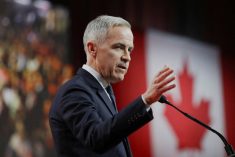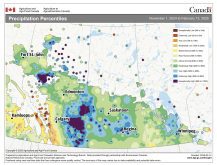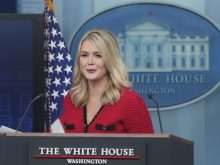Crude oil prices spent much of the spring lower than forecasts made in late winter but have jumped up in recent weeks on strong demand during the busy summer travel season.
West Texas crude, the North American benchmark, spent most of the winter in the US$70s per barrel, which was a bit lower than expected. It jumped up to a peak near $87 in April on worries about wider war in the Middle East as tensions grew between Israel and Hezbollah in Lebanon and with Iran.
However, that worry cooled and crude fell to near $73 in early June, when the price began to rise again in anticipation of a strong demand summer.
Read Also

Exports off to a slow start after last year’s torrid pace
Canadian grain, oilseed and pulse exports are off to a slow start, but there are some bright spots, according to the Canadian Grain Commission’s most recent weekly export data report.
WTI crude late last week traded around $82, and Brent, the international benchmark, traded around $85.
The outlook for the rest of the year is murky because major forecasting bodies are wide apart in their expectations of demand growth.
When I last wrote about the crude price forecast in March, there was a sharp difference between the bullish demand forecast from the Organization of Petroleum Exporting Countries and their allies, including Russia, known as OPEC+, and the cautious forecast of the International Energy Agency.
The gap between the forecasts has widened since then.
The IEA was criticized last year for underestimating demand growth, and it is again cautious this year, a stance that might prove correct, considering demand growth in the first half of the year was modest.
IEA now expects demand to grow by 970,000 barrels per day (bpd) this year. That is down from its March projection of 1.3 million barrels.
Economic problems in China caused consumption to fall there. Its real estate crash, which left millions of empty or unfinished homes across the country, continues to weaken its economy.
China customs data shows that in the first six months of the year, its crude oil imports were down 2.3 percent year over year. In June alone, imports were 11 per cent lower than the same month last year.
Generally, global economic growth is not as strong as last year because central banks in the major economies still have their foot on the brake, using high interest rates to slow economic growth and rein in inflation.
Also, drives for energy efficiency and the expansion of electric vehicles around the world are limiting crude demand increases, IEA said.
In contrast, OPEC+ sees demand expanding by 2.25 million bpd, based on a forecast of global economic growth that is more robust than the IEA’s expectations.
To support prices, OPEC+ has limited its members’ production for many months. It announced the first round of production cuts in April 2023 and then added another 2.2 million bpd in the fall to begin Jan. 1.
In June, it agreed, subject to market conditions, to keep the voluntary curtailment of 2.2 million bpd running until October and then will gradually unwind the cuts monthly until the end of September 2025.
Note, though, that several OPEC members are pumping and exporting more than agreed limits.
If OPEC+ is correct in its strong demand forecast, the world will face a tight supply/demand situation that would support oil prices for the rest of the year, even as non-OPEC+ producers, including Canada, the United States, Brazil and others, are increasing production and exports.
However, if the IEA assessment is more correct and if OPEC+ starts to increase output as expected beginning in November, then the upward pressure on prices will be modest.
The trajectory of interest rates in the major world economies will affect demand projections.
The Bank of Canada and the European Central Bank both trimmed benchmark interest rates in June.
More analysts expect the U.S. Federal Reserve to cut its rate in September, now that the monthly inflation reading in June was lower than expected, falling to three percent, year over year.
Rate cuts would ease the brake to economic growth that central banks have employed to curb inflation. That would encourage more economic activity, which could increase oil demand.
The U.S. Energy Information Administration forecasts Brent will average $89 in the second half of the year, up from $84 in the first half.
Investment bank Goldman Sachs expects Brent will be around $86 through the third quarter of this year.
Some analysts think the price could weaken a little in the fourth quarter as we move into a seasonally weaker demand period and as OPEC+ begins to wind back its cuts.
Many analysts see oil continuing to trade in about a $15 per barrel range with neither a spike nor collapse in the foreseeable future, barring any move to wider war in the Middle East.
Goldman Sachs sees the Brent ceiling at $90 and the floor at $75.

















